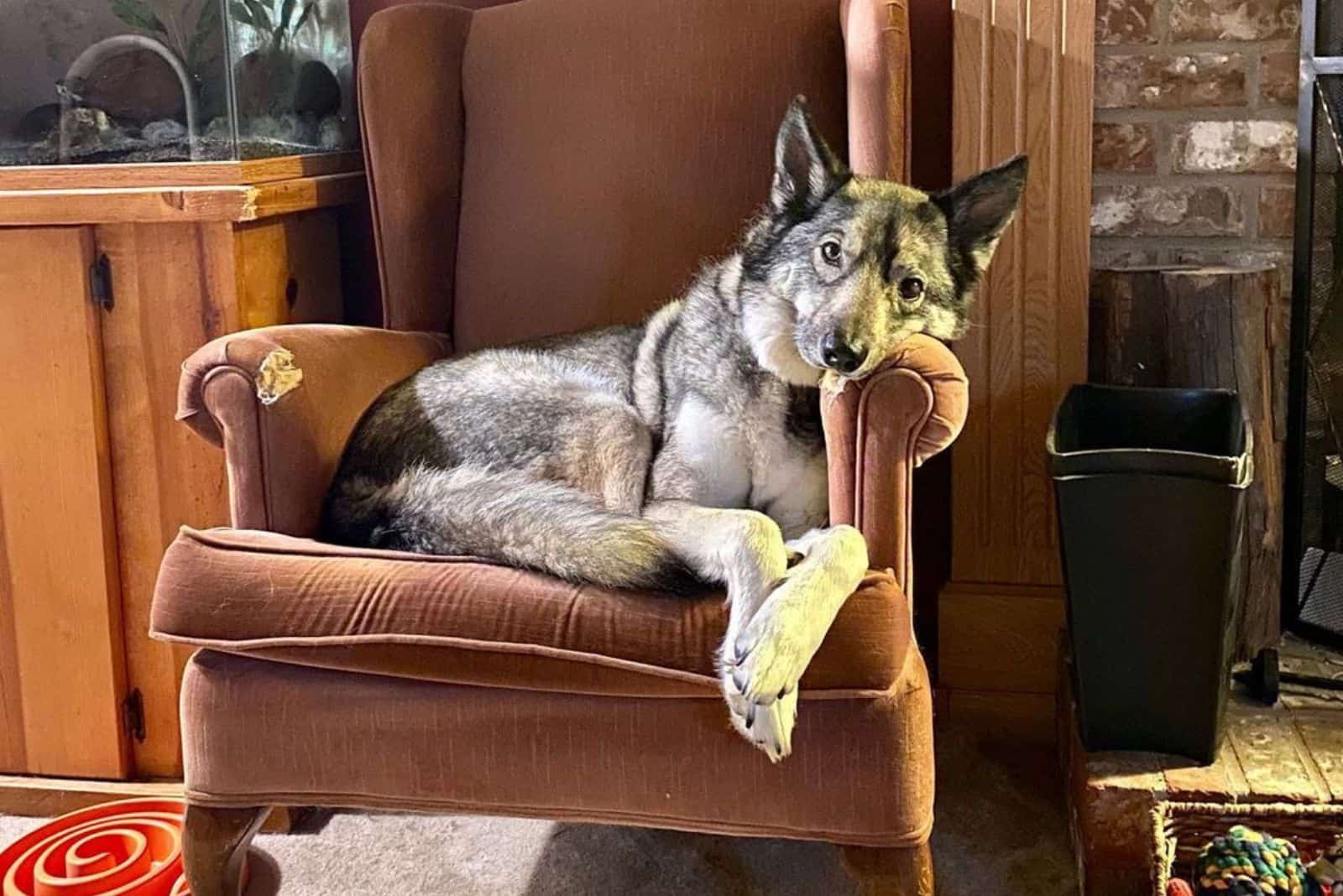Even though it is quite hard to believe that there is an actual dog mixed with a wild Coyote, the truth is – there are a plethora of Coydogs out there.
Coyotes are perfectly capable of breeding with domestic dogs. In fact, Native Americans were the first who intentionally bred this wild animal with their sled dogs in order to make a hardier dog.
The Coyote Husky mix is probably one of the rarest Husky mixes that makes a decent working dog. However, the breed is not for faint-hearted owners as it requires experience, hard-work, and firm leadership.
Now, let’s give this puppy a proper introduction!
What Is The Coyote Husky Mix?
Simply said, the Coyote Husky mix is an offspring of a Coyote and a Siberian Husky. Even though this breed is rare in comparison to other Husky mixes, we can say that the Husky Coyote mix has a long history behind it.
Namely, it is believed that the breed was intentionally designed by Native Americans for working purposes. Coyotes are known for their exquisite intelligence and great stamina.
On the other hand, Husky puppies are initially sled dogs intended to serve in severe conditions, and they have an impeccable work ethic. When combined together with a Coyote, they make fearless, athletic, and durable workers that survive even the most hazardous conditions.
Unlike other strong and dominant breeds, such as Rottweilers, Pit Bulls, Alaskan Malamutes, and German Shepherds, these canines are generally harder to train as they are independent by nature.
Still, with a knowledgeable owner and a lot of patience, these Coyote-like canines can turn into wonderful companions.
Parent Breeds
In order to get to know these two breeds in detail, we need to dig into their parents’ history first. Both Huskies and Coyotes have a long-term history of surviving in the most difficult conditions successfully.
On one hand, male and female Husky puppies have been comfortably raised by humans, while Coyotes, just like their counterparts – wolves, have been roaming in packs and taking care of their own.
Siberian Husky
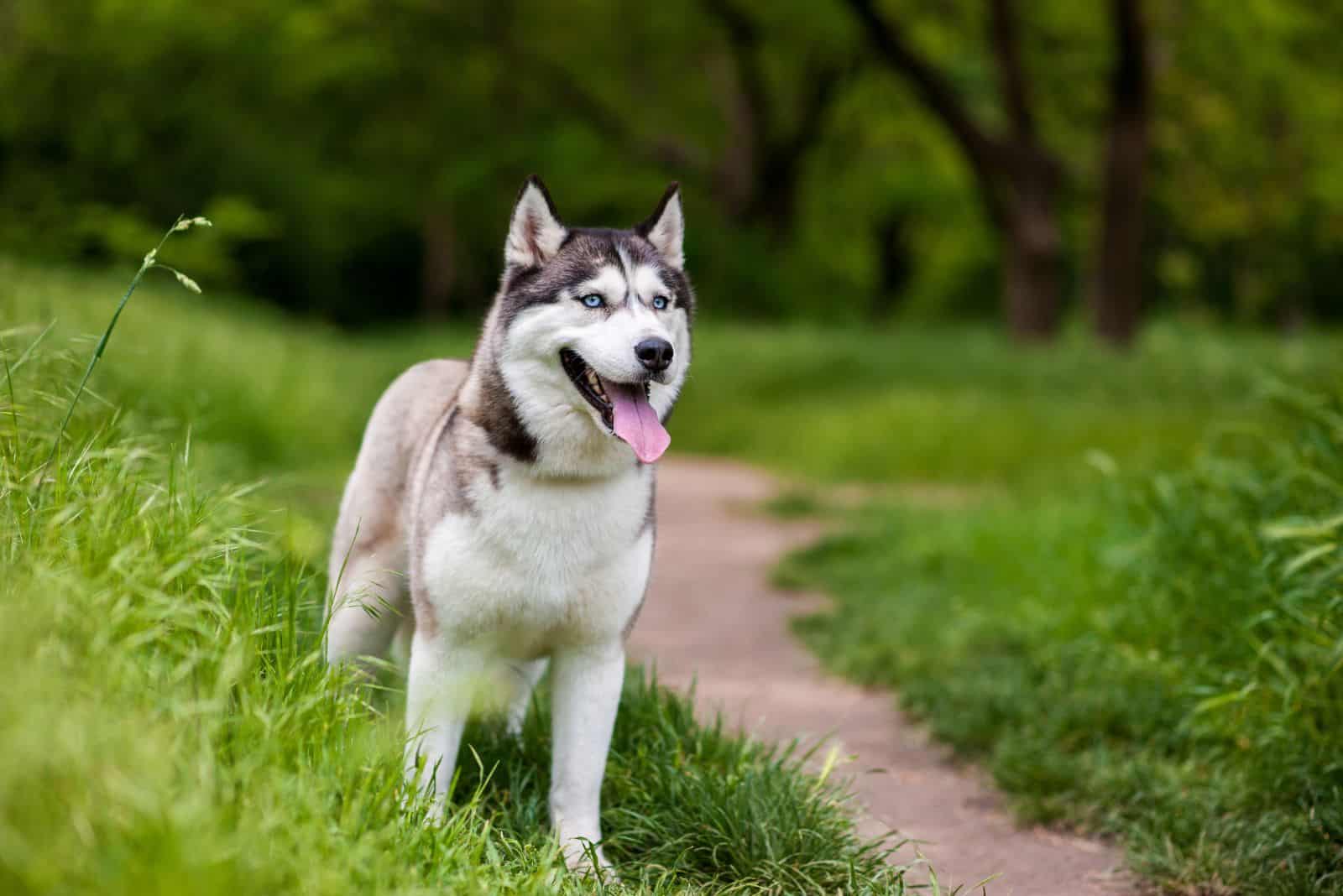
As the name says, Husky dogs originally come from Siberia. The breed belongs to a Spitz family, together with Akitas, Shiba Inus, Poms, and several others. This is a high-energy dog that was initially used as a sled dog and a working dog.
The breed is a long-term member of the American Kennel Club, as it was recognized in 1930. This is a medium-sized dog that reaches up to 23.5 inches in height. Its average weight revolves between 45 and 60 pounds for males, while females don’t go beyond 50 pounds.
They have a medium-long, thick double coat that sheds frequently. This canine requires brushing at least two times on a weekly basis. Considering its high shedding potential, these dogs are not recommended for people with dog allergies.
Despite the fact that this is not a large breed dog, Huskies possess great stamina and exquisite strength. Nowadays, reputable Husky breeders sell these canines as human companions and house dogs. The breed requires early socialization and obedience training, though.
These canines are mischievous at times, which makes them difficult. Unlike some other working breeds, such as GSDs and Border Collies, these dogs love having their own way, and they are extremely stubborn. That’s why the Husky breed is not recommended for novice owners.
Wild Coyote
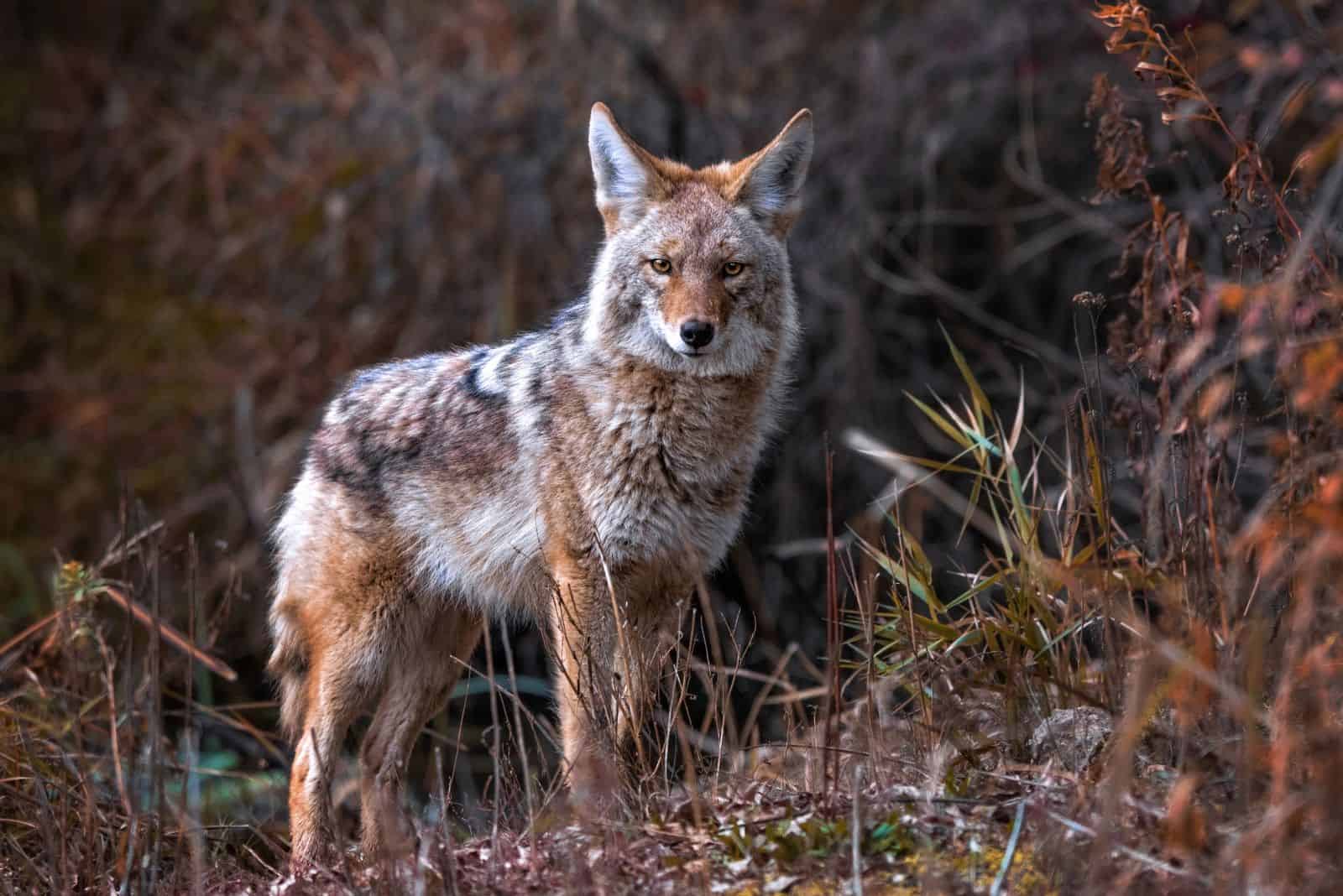
Coyotes are generally smaller than wolves, but they are just as dangerous. These wild animals either operate in packs or on their own. They are native to North America, where they originally represented a mythological figure to natives.
The average weight of these wild canines revolves between 25 and 40 pounds. On the other hand, they are 15 to 24 inches tall. However, their size depends on the season. Coyotes are generally bigger during the summer as they eat meat.
During the winter, they hunt less, and they are mostly vegetarians. That directly impacts their muscularity and makes them look smaller.
Coyotes have a double coat that is generally red and gray, with a black tail. Unlike wolves, they are more dog-like.
Even though Huskies are naturally aggressive dogs, Coyotes are far more dangerous animals. Their domestication is not recommended at all. They are rather wild animals that live in packs with other members of their family.
However, Coyote dogs, popularly known as ‘‘canid hybrids,’’ unlike wolf dogs, are socialized much easier as they respond positively to firm leadership and early socialization.
A part-coyote dog is not a good pet by default. However, this particular mix makes a decent, hard-working pet.
Physical Appearance Of A Coyote Husky Mix
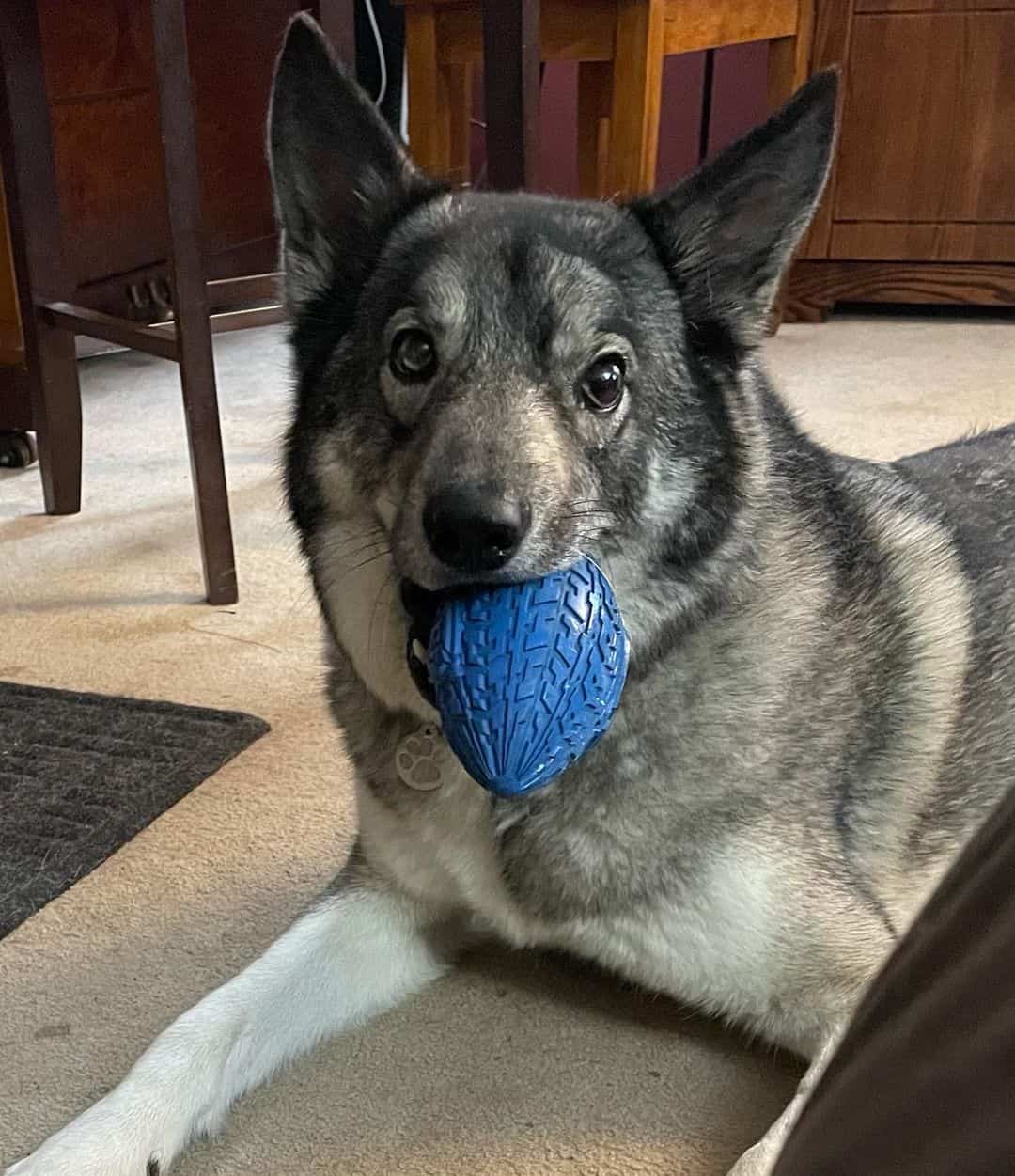
Generally, Husky Coyote dog mixes appear as part Huskies and part Coyotes. However, puppies with more than seventy percent of the Husky’s bloodline tend to look more like their Husky parents.
If we take into consideration that both Coyotes and Huskies share a lot of common physical traits, we can say that their crossbreeding is not as strange as it sounds. They have a compact body, with erect, pointy ears, and they have a fox-like head that is slightly rounded on top.
As both the Husky and the Coyote parents have a thick, double coat type, it is to be expected from their offspring to have the same.
The Coyote Husky mix can have both Coyote and Husky coat colors, depending on the bloodline. That said, you can find these hybrid canines in red, gray, black and white, agouti, sable and white, and gray and white color patterns.
Dog owners who decide to have this hybrid indoors should be aware of the fact that Siberian Coydogs shed a lot. They need brushing two times a week regularly in order to stay neat and shiny.
On the other hand, they don’t need a bath that often. Bathing them every three to four months will be more than enough.
Size
Since there is no clear rule on how big these hybrids get, the Coyote Husky mix can match both the Coyote and the Husky growth chart. That said, they weigh anywhere between 25 and 60 pounds.
However, puppies with a dominant Coyote gene are expected to be smaller – around 40 pounds. On the other hand, their height revolves between 15 and 24 inches.
Despite the fact that these canines are active by default, you should carefully design their feeding chart.
Aside from raw food, these hybrids either need high-quality wet food or kibble. Siberian puppies generally have a tendency of gaining weight quite easily, which is why it is not recommended to feed them junk food.
Furthermore, bear in mind that this is a dog that needs a lot of activity during the day. They require at least an hour of high-intensity, outdoor exercise during the day.
Temperament Of A Coyote Husky Mix
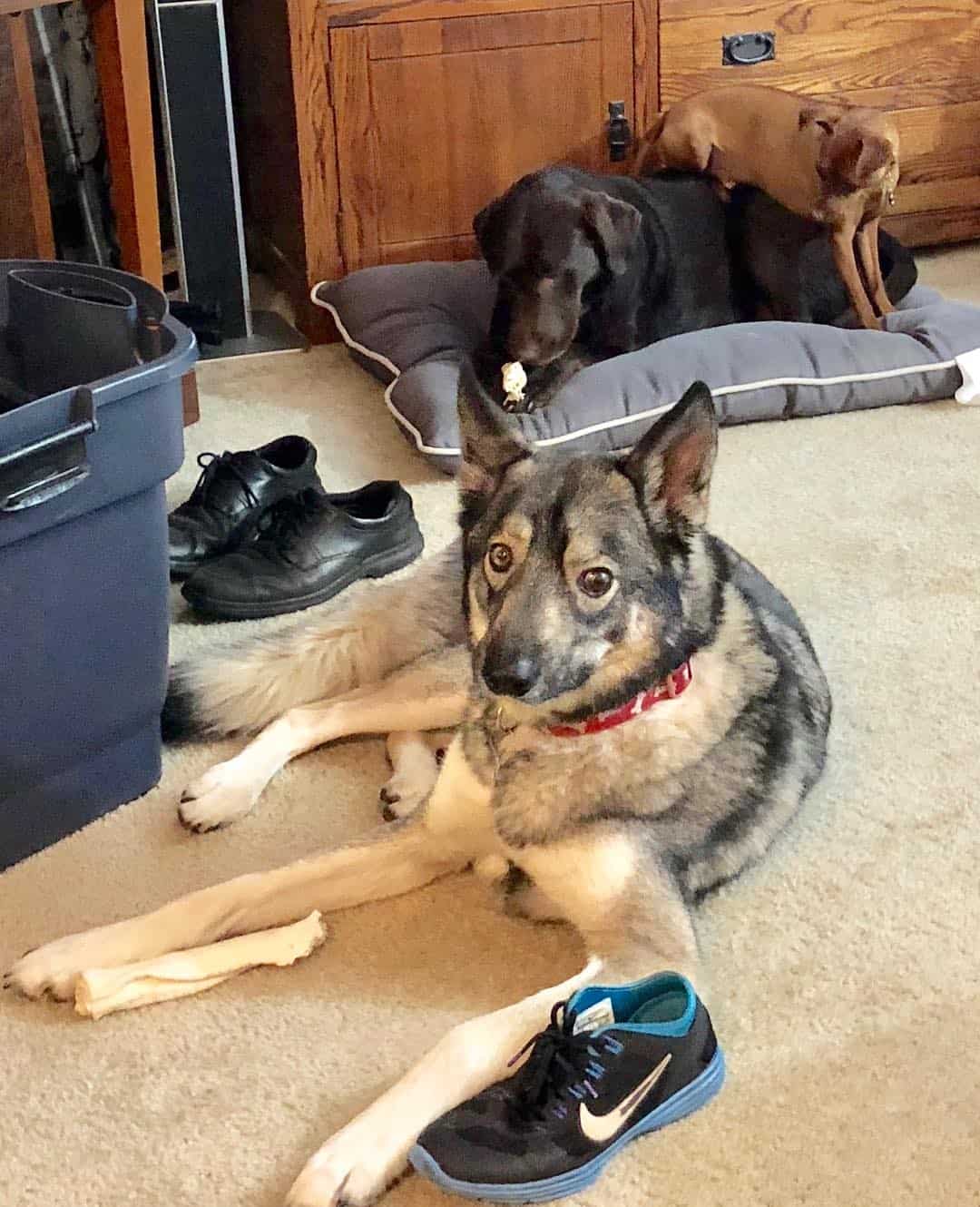
Siberian Coydogs are true pack leaders by default, which is why they need firm leadership and an experienced owner. Siberian puppies belong to aggressive dog breeds themselves.
That said, their offspring require socialization and obedience training from a young age.
This hybrid dog is not recommended to families with small children as Coyote Husky mixes have a low tolerance threshold.
Using snacks and dog food as a positive reinforcement technique is always good to motivate them as these dogs are naturally stubborn and mischievous.
They have a high tendency to bark, just like their Siberian parents. However, barking is a part of their communication with owners and not a sign of their watchdog traits.
Once socialized and obedience-trained, these canines can be excellent human companions. They are hard workers and solid companions on walks, hikes, and treks. Due to their independent character, they don’t get along with other pets well.
Trainability
A future Siberian Coydog owner should bear in mind the fact that these canines are not as easy to train as some other dog breeds. On the contrary, both Siberian puppies and Coyotes are dominant individuals that enjoy having their own way.
That’s where early socialization and obedience training take over. You should start training your dog socialization and obedience from an early age. That way, you will have much less to do in their adulthood.
The use of training tools, such as dog training collars or toys is always encouraged when it comes to Siberian Coydogs. These are dominant puppies that require a lot of commitment and hard work, but it pays off in the future.
Once trained and socialized, the Siberian Coydog can be a wonderful companion that is loyal, affectionate, and protective towards its owner. On the other hand, improper training and neglecting the puppy’s needs can lead to aggression and self-destruction.
Socialization And Housing
It is much easier to socialize a Coydog Husky during the puppyhood stage as socializing an aggressive dog during adulthood can be hard and overwhelming.
These canines are not recommended for small apartments or studios as they need a spacious home and a big back yard. Despite their size, Coyote Husky mixes are extremely active dogs that need a lot of space to assert their independence.
However, hybrids with a dominant Husky gene may be easier to adapt into a smaller home.
Bear in mind that this is an aggressive dog breed, which means that they don’t get along with other dogs and pets as well as other Husky mixes do. These canines are quite territorial, which is why it is not recommended to leave them alone with children.
However, early-socialized and obedience-trained puppies make decent house dogs that get along with all family members just fine.
One thing that every Siberian Coydog should know is that these dogs shed heavily. That said, you should consider purchasing a dog bed for your puppy. These canines happen to leave hair trails all over the house, which is why letting them sleep wherever they want is not a good option.
Health Issues Of A Coyote Husky Mix
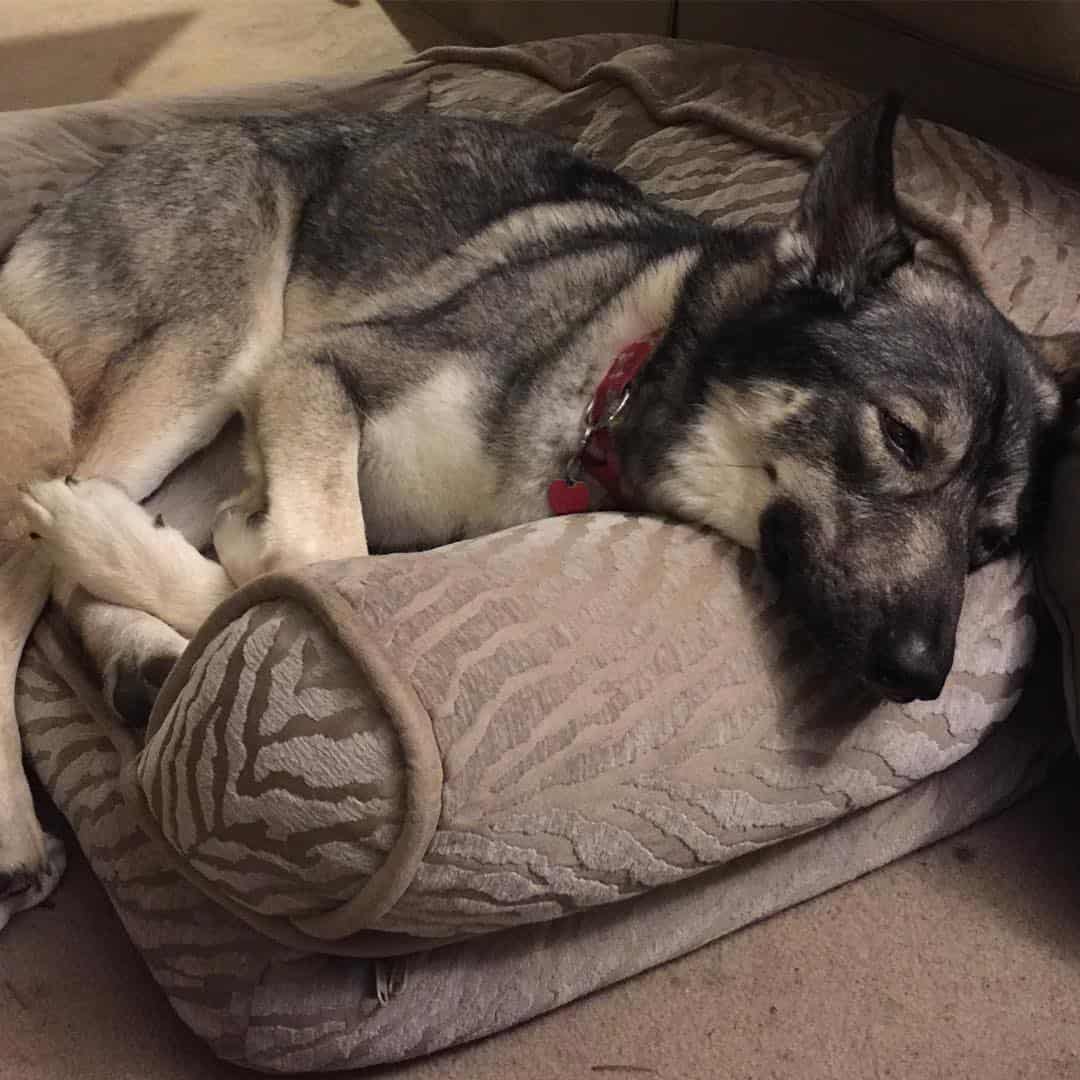
Generally, Siberian puppies are healthy dogs whose lifespan revolves between 12 and 14 years. On the other hand, Coyotes that live in the wild generally live between 6 and 12 years, while they can easily reach up to 14 years of life in captivity.
We can expect that their offspring will live just as long.
However, there are several things that you should bear in mind. Firstly, these canines need high-quality dog food, and a well-organized feeding chart.
Furthermore, neglecting their exercise needs will have just as hazardous of consequences as leaving them without food. That’s why you should regularly exercise your dog in order to make it healthy, both physically and mentally.
As this is not the healthiest dog breed in the world, Siberian Coydogs can face several health issues, such as hip dysplasia, cataracts, and rabies.
Hip Dysplasia
Hip dysplasia in dogs is a hereditary condition that affects both male and female Siberian Coydogs. It represents an abnormality of a hip joint, and it is usually manifested in a so called ‘‘bunny walk.’’
Other symptoms related to this issue are reluctance to jump, run, or climb stairs, lethargic behavior, inability to perform some regular dog activities, and pain in the groin.
This condition is generally treated via surgery. The average cost of this procedure is $1500 to $3000.
Cataracts
Canine Cataracts is another hereditary issue that generally affects puppies in their older age. However, young dogs can suffer from cataracts, too.
Although it is mostly genetic, cataracts can be the result of some trauma or diabetes. Symptoms related to this condition include cloudy eyes, changes in eye color, constant rubbing or scratching, and reluctance to climb.
Cataracts are treated surgically. However, the treatment is not recommended for puppies with unstable health or a poor life expectancy.
Rabies
Rabies are generally related to Coyotes as they live in the wilderness and they have a higher chance of being affected. The virus is transferred to the blood by the bite of an infected animal.
Unfortunately, this is a deadly virus once the first symptoms start to kick in. Some of the symptoms related to rabies are aggression, restlessness, fever, excessive drooling, seizures, and difficulty swallowing.
If you notice that your dog is starting to act weird all of a sudden, pay your vet a visit.
The virus is preventable with early vaccination.
Conclusion
The Coyote Husky mix is a rare hybrid dog that makes a decent pet and an excellent worker. However, these canines are not for everyone as they require firm leadership and an experienced owner.
If you are planning to buy one of these unique canines, bear in mind the amount of time you need to dedicate in order to make a decent family pet out of a half-Coyote. If, by chance, you already happen to have one in your home, I hope this article has brought you some new information.
Read more: Is The Husky Dachshund Mix The Worst Of All Husky Mixes?
